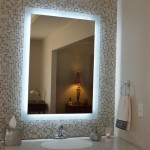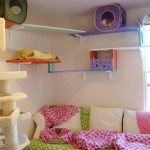How To Decorate Your Room With No Money
Decorating a room can seem like an expensive undertaking, particularly when browsing through catalogs or scrolling through design inspiration online. However, it is entirely possible to revitalize a living space without spending any money. The key lies in resourcefulness, creativity, and a willingness to repurpose existing items. This article will explore various strategies to achieve a visually appealing and comfortable room transformation without incurring any financial costs.
Rearranging Existing Furniture and Décor
The simplest way to change the look and feel of a room is to rearrange the furniture. Shifting the layout can dramatically alter the flow of the space and create a fresh perspective without requiring any new acquisitions. Consider the current arrangement and analyze its strengths and weaknesses. Is the room easily navigable? Does the furniture placement maximize natural light? Does the current layout promote conversation and interaction, if applicable?
Start by sketching out a rough floor plan of the room on paper. This allows for experimentation with different furniture configurations without physically moving heavy items. Consider the focal point of the room, such as a fireplace, window, or an architectural feature. Arrange the furniture to draw attention to this focal point. Experiment with different angles and positions for sofas, chairs, and tables. Moving a sofa away from a wall or angling chairs towards each other can create a more inviting and dynamic space.
In addition to furniture, consider repositioning existing décor items. Wall art, such as paintings or photographs, can be moved to different locations to create a new visual impact. Grouping smaller items, such as candles, vases, and books, into curated displays can add visual interest to shelves and tables. Experiment with different color palettes and textures to create a cohesive and aesthetically pleasing arrangement. Don't be afraid to remove items that no longer serve a purpose or detract from the overall aesthetic. Minimalism can often be more impactful than clutter.
Another often-overlooked element is lighting. Repositioning lamps can dramatically change the ambiance of a room. Consider the placement of lamps in relation to furniture and artwork. Using lamps to highlight specific features, such as a painting or a reading nook, can add depth and dimension to the space. Experiment with different types of light bulbs to create a warmer or cooler atmosphere. Natural light is also a valuable asset. Ensure that windows are clean and unobstructed to maximize the amount of natural light entering the room.
Repurposing and Upcycling Materials
Upcycling and repurposing offer a cost-effective way to transform everyday items into unique and stylish décor pieces. This approach not only saves money but also promotes sustainability and reduces waste. Look around the house for items that are no longer in use or have outlived their original purpose. With a little creativity, these items can be transformed into something new and beautiful.
Old jars and bottles can be repurposed into vases, candle holders, or storage containers. Simply clean the jars thoroughly and remove any labels. Decorate them with paint, twine, or ribbon to match the room's aesthetic. Old fabric scraps can be used to create decorative pillows, patchwork quilts, or wall hangings. Cut the fabric into interesting shapes and patterns and sew them together to create a unique textile piece. Wooden pallets can be transformed into coffee tables, headboards, or shelving units. Sand the pallets down to remove any splinters and paint them in a color that complements the room's décor.
Books can also be used in creative ways to decorate a room. Stack them to create a makeshift side table or use them as risers to elevate plants or other decorative items. Remove the covers from old books and display the pages as wall art. Frames can be repurposed to showcase artwork, photographs, or even dried flowers. Garage sales and thrift stores can also be valuable sources for finding inexpensive materials for upcycling projects. Look for items that have potential but may need a little bit of work to restore them to their former glory. A fresh coat of paint and some new hardware can often transform a dated piece of furniture into a stylish and functional item.
Consider the function of each room when repurposing items. In a bedroom, old scarves can be hung as a decorative tapestry. In a kitchen, old wooden spoons can be painted and used as wall décor. In a living room, old records can be hung on the wall as art. The possibilities are endless, and the only limit is your imagination.
Creative Use of Natural Elements and Found Objects
Bringing the outdoors in is a fantastic way to add natural beauty and texture to a room without spending any money. Nature provides a wealth of decorative materials that can be used to create stunning and unique décor pieces. From fallen branches and pinecones to seashells and stones, the options are vast and varied.
Gather fallen branches and arrange them in a vase or container to create a striking sculptural element. Paint the branches a metallic color, such as gold or silver, for a more glamorous look. Pinecones can be used to create wreaths, garlands, or table centerpieces. Arrange them in a bowl or basket for a simple yet elegant display. Seashells and stones can be used to decorate vases, picture frames, or candle holders. Arrange them on a windowsill or mantelpiece to create a coastal-inspired vignette. Dried flowers and leaves can be pressed and framed to create beautiful and delicate wall art.
Furthermore, consider houseplants. Propagating plants from existing ones is a cost-free way to add greenery to a room. Many common houseplants, such as succulents and pothos, are easy to propagate from cuttings. Simply take a cutting from a healthy plant and place it in water until roots develop. Once the roots are established, transplant the cutting into a pot with soil. Consider the light requirements of different plants when choosing where to place them in the room. Some plants thrive in direct sunlight, while others prefer indirect light. Grouping plants together can create a lush and vibrant display.
Found objects, such as interesting rocks, feathers, or driftwood, can also be used to decorate a room. Arrange them on a shelf or table to create a conversation starter. These natural elements often have unique shapes, textures, and colors that can add visual interest to a space. By incorporating natural elements into a room's décor, it creates a sense of tranquility and connection to the outdoors.
In conclusion, decorating a room without spending any money is achievable by focusing on resourcefulness, creativity, and repurposing. By rearranging existing furniture and décor, upcycling materials, and incorporating natural elements, any space can be transformed into a stylish and comfortable living environment without breaking the bank. This approach encourages sustainability and allows for the creation of unique and personalized décor pieces that reflect one's individual style and taste.

How To Decorate With No Money Houseful Of Handmade

10 Min Makeover How To Decorate A House With No Money

How To Decorate A House With No Money Making Maanita

Decorate With No Money Budget Diy Room Decor

Pin On Posh Pennies Decor Tips

26 Diy Cool And No Money Decorating Ideas For Your Wall Woohome

How To Decorate A House With No Money

26 Diy Cool And No Money Decorating Ideas For Your Wall Woohome
Interior Designers Share How To Make Your Home Look Better For Free

Pin On Diy







